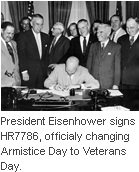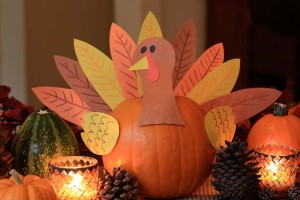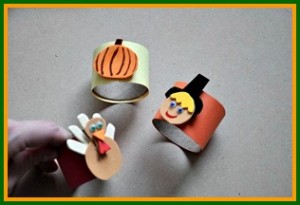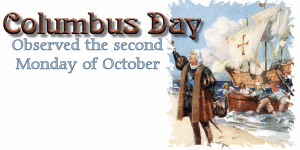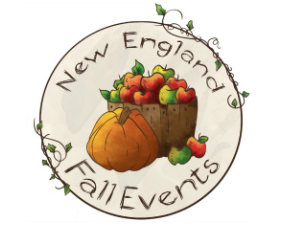Here is a video explaining how to carve a pumpkin (as well as some non-carving alternatives.) If you get a pumpkin at our pumpkin patch cluster meeting, I don’t recommend carving it until the week of Halloween, so it will stay looking fresh for big day.
Author Archives: Terry Sweeney
Winter Holidays and Things To Do
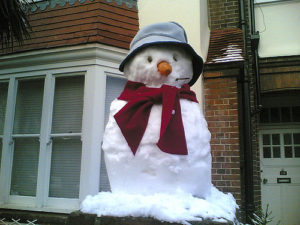 A Rhode Island winter can be very cold and snowy! This means that you may end up indoors with your host children. The Winter Holidays Au Pair in America pinboard on Pinterest has some great ideas for things to do during the holidays and during the winter.
A Rhode Island winter can be very cold and snowy! This means that you may end up indoors with your host children. The Winter Holidays Au Pair in America pinboard on Pinterest has some great ideas for things to do during the holidays and during the winter.
Photo credit: Jay Gooby (Flikr)
The History of Veterans Day
In 1954, Congress, at the urging of the veterans service organizations, struck out the word “Armistice” and inserted the word “Veterans.” With the approval of this legislation on June 1, 1954, November 11 became a day to honor American veterans of all wars.
Between 1968 and 1975, Veterans Day was moved around on the calendar, sometimes even appearing on the last Monday of October. Finally on September 20, 1975, President Gerald R. Ford signed a law which returned the annual observance of Veterans Day to its original date of November 11, beginning in 1978.
Veterans Day continues to be observed on November 11, regardless of what day of the week on which it falls. The restoration of the observance of Veterans Day to November 11 not only preserves the historical significance of the date, but helps focus attention on the important purpose of Veterans Day: A celebration to honor America’s veterans for their patriotism, love of country, and willingness to serve and sacrifice for the common good.
Thanksgiving Crafts for Kids
Thanksgiving Crafts for Kids
Here are 3 examples:
Columbus Day
Columbus Day, which is observed annually on the second Monday of October, remembers Christopher Columbus’ arrival to the Americas on October 12, 1492.
For more information about this holiday go to: http://www.history.com/topics/columbus-day
For activities for children including arts and crafts, word searches, puzzles and more facts and history go to http://www.theholidayzone.com/columbus/
New England Fall Events
Most people love Fall in New England with the beautiful weather, the leaves changing, apple picking, pumpkins AND all the wonderful harvest festivals. Whether you want to stay in Rhode Island or venture out to the other New England states, check out this great site for wonderful events in the area. http://newenglandfallevents.com/
Halloween, what is it all about?
 Halloween is celebrated across the United States on October 31st. Not all, but most families will participate in some aspect of the Halloween holiday traditions. This may be a new experience for you so It is a good idea to talk to your host family ahead of time and find out how they celebrate.
Halloween is celebrated across the United States on October 31st. Not all, but most families will participate in some aspect of the Halloween holiday traditions. This may be a new experience for you so It is a good idea to talk to your host family ahead of time and find out how they celebrate.
Like many other holidays, Halloween has changed throughout history. Over 2,000 years ago people called the Celts lived in what is now Ireland, the UK, and parts of Northern France. November 1 was their New Year’s Day. They believed that the night before the New Year (October 31) was a time when the living and the dead came together.
More than a thousand years ago the Christian church named November 1st All Saints Day. This was a special holy day to honor the saints and other people who died for their religion. The night before All Hallows was called Hallows Eve. Later the name was changed to Halloween.
Like the Celts, the Europeans of that time also believed that the spirits of the dead would visit the earth on Halloween. They worried that evil spirits would cause problems or hurt them. So on that night people wore costumes that looked like ghosts or other evil creatures. They thought if they dressed like that, the spirits would think they were also dead and not harm them.
The tradition of Halloween was carried to America by the immigrating Europeans. Some of the traditions changed a little, though. For example, on Halloween in Europe some people would carry lanterns made from turnips. In America, pumpkins were more common. So people began putting candles inside them and using them as lanterns. That is why you see Jack ‘o lanterns today.
These days Halloween is not usually considered a religious holiday. It is primarily a fun day for children. Children dress up in costumes like people did a thousand years ago. But instead of worrying about evil spirits, they go from house to house. They knock on doors and say “trick or treat.” The owner of each house gives candy or something special to each trick or treater.
Here are some safety tips for Trick or Treating:
- Adult supervision is essential. Always accompany the children if they are going door to door to trick or treat
- Try tick-or-treat-friendly homes. Ensure the children only visit houses with lights on. And, you might also suggest the houses they visit have some sort of Halloween decoration on the porch.
- Stay outside. Make sure the children don’t go inside someone’s house. They can trick or treat on the porch.
- Remain visible. Dress the children in bright costumes or have them wear reflective strips or carry a glow stick or flashlight.
- Quality-check treats. Check the candy before they eat it. Throw out any candy that is not in its original wrapper or looks like it has been tampered with.
- Say “no” to strangers. Remind the children to never accept a ride or go anywhere with a stranger.
- Have a great time! Finally, make sure your kids have tons of fun and enjoy the night.

Happy Rosh Hashanah!
Wishing our Jewish host families, au pairs, community counselors, colleagues and friends a very Happy New Year. Rosh Hashanah begins at sundown on Sunday October 2nd and ends in the evening of Tuesday October 4th.
The customs and symbols of Rosh Hashanah reflect the holiday’s dual emphasis on both happiness and humility. Customs observed on Rosh Hashanah include the sounding of the shofar (a musical horn) and eating special foods including round challah (bread), which symbolizes the circle of life, and sweet foods for a sweet New Year. It is also customary to extend wishes for a good year. In Hebrew, the simple form of the greeting is “L’shanah tovah!”
Here is a great site for children including information about the holiday traditions, games, word searches, Hebrew vocabulary and crafts.
http://www.akhlah.com/jewish-holidays/roshhashanah/
Want to try cooking for the holiday? Find out how to make Challah, Honey Cakes…and lots more here:
Hints for Success – Homesickness/Culture Shock
 Almost everyone experiences culture shock when they come to a completely new environment. Everything is different: the language, the food, and the people.
Almost everyone experiences culture shock when they come to a completely new environment. Everything is different: the language, the food, and the people.
Here are my Top 5 Tips for
Dealing with Homesickness
1. Make Friends – Don’t wait for other au pairs to reach out to you, reach out to them. There are other lots of new au pairs who are feeling the same way you are right now. Set a goal to reach out to a few of them each day. Some will respond and some will not. Don’t let that discourage you. No one will ever be mad at you for sending them a message to say hello or ask if they want to do something together. Make friends from various countries and you will also get a chance to practice your English skills together.
2. Stay in touch with your home country, but not too much. Skyping or talking on the phone every day with your family and/or friends back home normally makes homesickness worse. Try emailing instead and reduce the Skype and phone calls to once a week, until you feel stronger. It’s much harder seeing the faces and hearing the voices of those you miss.
3. Get out of the house (or your room specifically) – Go to cluster meetings, have coffee or movies with other au pairs, join a gym, go to the library, go for a walk, visit the mall, get a manicure, visit a museum. If someone invites you out, say “yes.” Also, don’t be afraid to do the inviting. If your host family invites you to do things with them, say “yes.” This will help you get to know each other and contribute to your overall happiness.
4. Realize that it definitely gets better – All au pairs experience homesickness and nearly all of them stay and have a successful year (some stay for two years.) So, it must get better, right? Once you get past the initial homesickness, most au pairs report how quickly the year goes by.
5. Make Plans – Create your own Au Pair Bucket List (places you want to go, new foods to try, new things to experience during your year in the U.S.) and start doing them now. Post on our cluster Facebook group to find others who may want to join you on your adventures.
Photo by: Shimelle Laine (Flickr)
Fun Fall Activity Ideas
 The Fall is a beautiful time here in New England. Many days are still warm but it can also cool down a bit. It’s a great time to hike, kayak, and go apple picking. If you don’t know what to do with your host children then check out these
The Fall is a beautiful time here in New England. Many days are still warm but it can also cool down a bit. It’s a great time to hike, kayak, and go apple picking. If you don’t know what to do with your host children then check out these
Fun Fall Activity Ideas on the Au Pair in America pinboard on Pinterest. Photo: Joe Madonna (Flickr).

